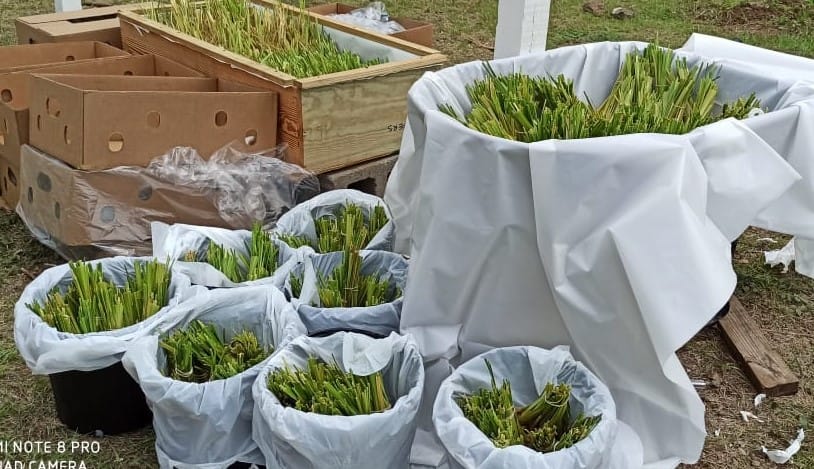
The Inter-American Institute for Cooperation on Agriculture (IICA), continues to spearhead a major environmental project entitled “Strengthening Coastal and Marine Climate Resilience through Upland and Coastal Ecosystem Based Adaptation and Community Engagement.”
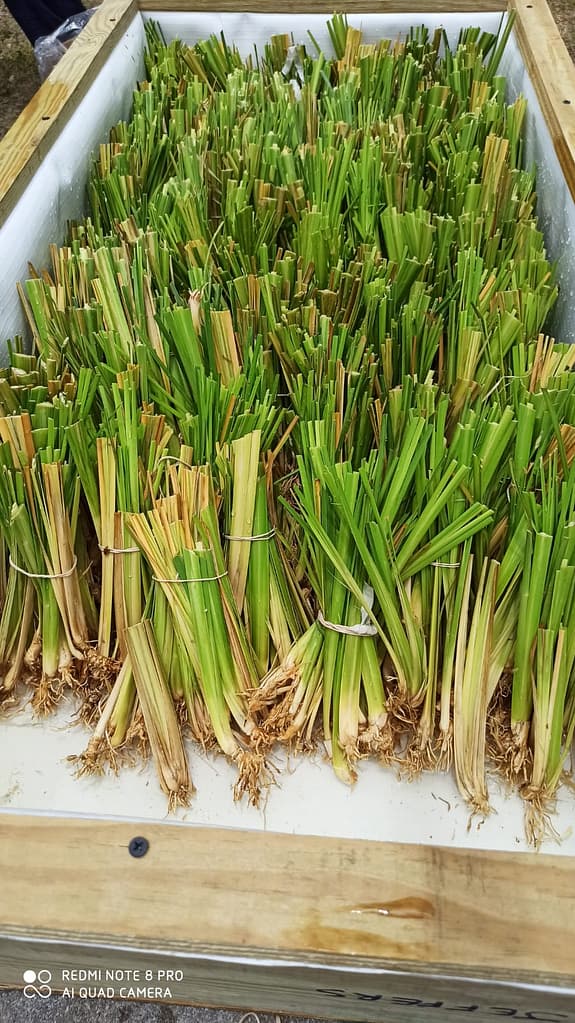
This project is designed to support climate change adaptation and poverty alleviation, involving the growth of the vetiver grass here in Antigua and Barbuda.
IICA’s National Specialist Craig Thomas said that the second batch of vetiver grass imported from Dominica was received on Wednesday this week and was transported to the Forestry nursery located in Bendals for quarantine purposes.
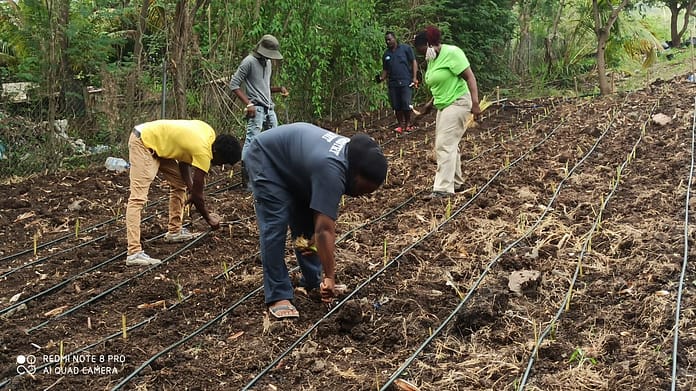
This is the first time that the vetiver planting materials have been exported from one Caribbean country to another, thus sealing its place in history records.
IICA, through its technical cooperation agreement, is partnering with the Caribbean Agricultural Research and Development Institute (CARDI) in collaboration with the Ministry of Agriculture (MOA) on this project.
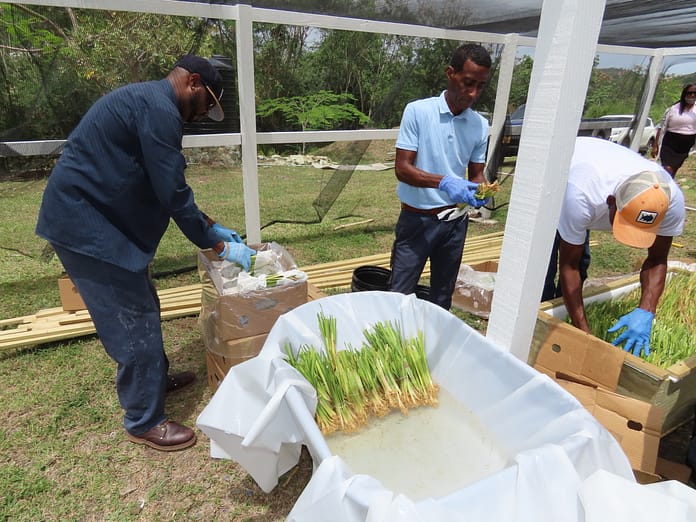
The project will focus on coastal and upstream watersheds – known to be susceptible to soil erosion and slippage, on lands degraded by agriculture or development and where activities directly impact downstream coastal environments.
The Cooks Landfill is the main project site and the activities for the project are designed to revitalize, protect, clean and enhance the country’s largest mangrove which borders the landfill and the marine areas within the Five Islands Harbor.
Bradbury Browne, CARDI’s Technician explained the organization’s role in this project.
“CARDI’s main involvement is the technical aspect of it, in terms of advice on the application of fertilizer , technical support for the planting of the grass, -because you know CARDI is big with livestock feed and grasses , so that’s why we came on board and then the irrigation system as well.”
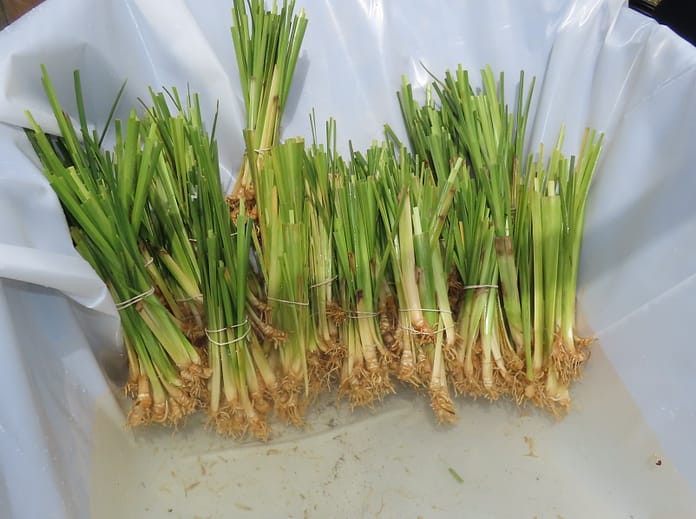
Thomas noted that there are two (2) major components of this project- installation of the Veep Model using Vetiver Grass to control the soil erosion and the other is the entrepreneurial green business for handicraft makers .
“In Dominica, in St. Lucia , in Trinidad- the utilization of the vetiver grass for craft making is a huge business so that’s another value chain through the utilization of a local product to increase niche business.”
The Cooks Landfill is expected to be planted with some 35,000 – 45,000 vetiver plants, using a hedge row planting method planted along the perimeter of the dump which borders the mangrove.
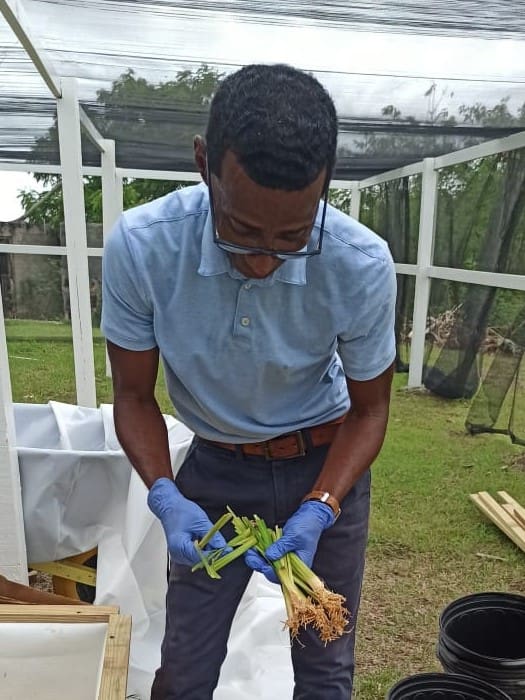
This will act as a control mechanism for soil erosion and the leaching of harmful chemicals which currently is a hazard for the biodiversity in the area.
This quota will be met via multiplication planting techniques (Propagation) at both the propagation nurseries located at the Forestry nursery in Bendals and at the Gilbert Agricultural and Rural Development Center (GARDC).
On reaching maturity, the relocation of the plants to the Cooks area will commence.

GARDC Executive Director, June Jackson said that they are happy to be on board and they have learnt a lot about the vetiver grass so far.
“We know that Antigua and Barbuda could benefit from something like this and the handicraft component- when you actually see from other regions what they are able to make from this particular grass , it can benefit us and its sustainable and that is what we want among our communities, we are quite excited to see the end result.”
Transplanting started on Wednesday at the Forestry Unit in Bendals whereby approximately 600 vetiver slips were planted, and a similar exercise will be conducted at the GARDC next Tuesday.
The plants will be maintained at a height of 3ft-4ft over the next 3-6 months, when they are expected to be harvested, separated and transplanted between October-November, 2021 during the wet season.
Ministry of Agriculture Technician Victor Harris noted that the vetiver grass will grow and form clumps and when matured and ready for harvest are then separated into individual plantlets before planting can proceed.

One vetiver plant can produce an average of 50 plantlets under favorable conditions.
The project which is a regional initiative is currently being executed in Antigua and Barbuda, Dominica, Saint Lucia, and Tobago.
It is funded under the CBF EbA Facility, financed by the Government of Germany, German Development Bank (KfW) with resources from the International Climate Initiative (IKI) of the German Ministry of the Environment, Nature Conservation and Nuclear Safety.
Advertise with the mоѕt vіѕіtеd nеwѕ ѕіtе іn Antigua!
We offer fully customizable and flexible digital marketing packages.
Contact us at [email protected]


















I’m NOT saying that the introduction of Vetiver Grass to Antigua is a bad thing but it COULD be. When man’s arrogance is equal to his ignorance, we are treading down the road to potential disaster. Remember what happened to our ecosystem when the plantation owners introduced the CASSY BUSH.
This plant that over-runs old cultivations and grazing land was introduced into Antigua as a fuel for the sugar industry of the 18th century. It is a fast growing hardwood with a high calorific value. It has made itself very much at home here, producing thorny thickets. In spite of its uncomfortable prickles it has had many uses: perfume, ink, dye, glue, tanning, tool handles and charcoal.
Even thought the Cassy Bush has many positive uses, it has taken over our biosystem and has become more of a nescience then a benefit.
I have a question: How does this plant propagate?
Does this plant use air borne seeds like the cassy bush?
Introducing non-native life into an ecosystem can have unforeseen consequences.
Is there a replacement plant that could be used for the purpose of reaching the IICA’s goals?
Is there a plant that was once native to Antigua that ‘could be’ more in balance with our ecosystem?
Antigua ONCE HAD mahogany trees. Maybe they could be re-introduced into our environment and have a NEW cash crop (lumber) in Antigua’s future.
Comments are closed.